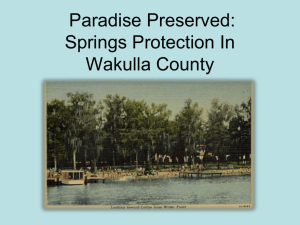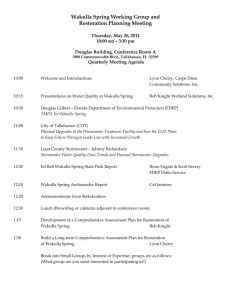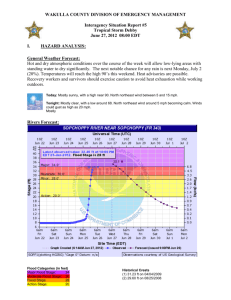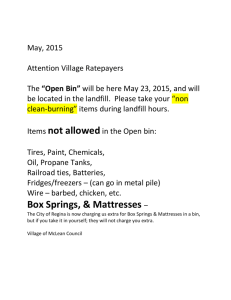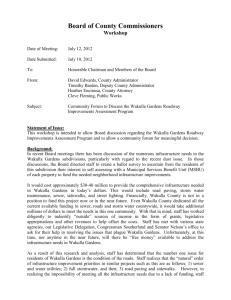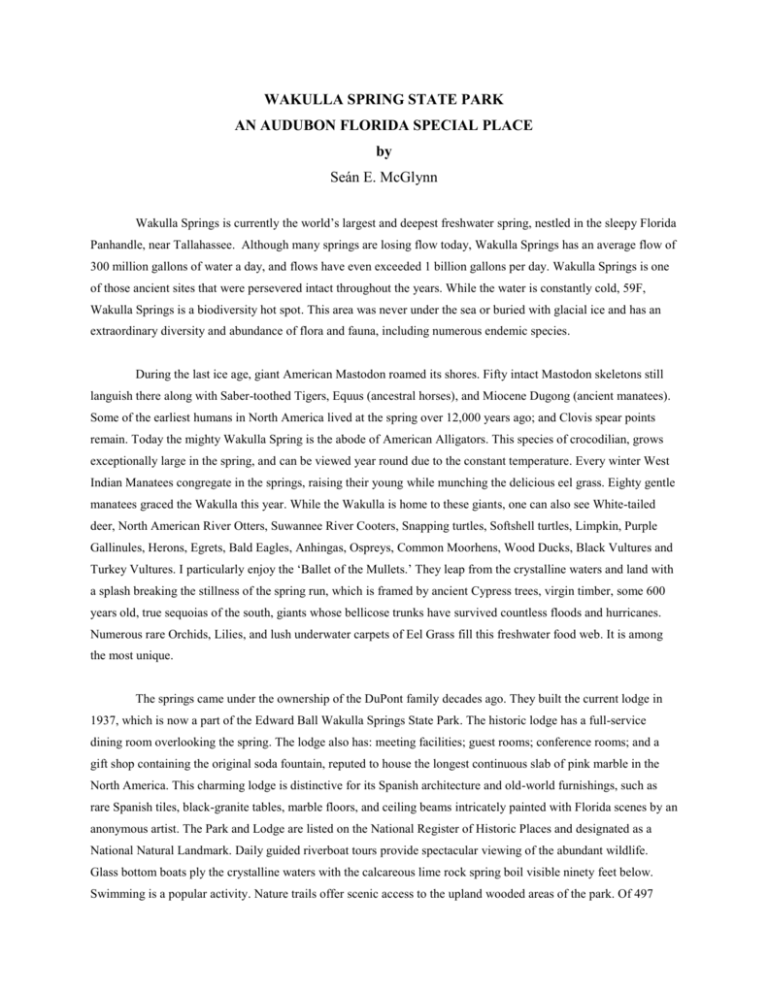
WAKULLA SPRING STATE PARK
AN AUDUBON FLORIDA SPECIAL PLACE
by
Seán E. McGlynn
Wakulla Springs is currently the world’s largest and deepest freshwater spring, nestled in the sleepy Florida
Panhandle, near Tallahassee. Although many springs are losing flow today, Wakulla Springs has an average flow of
300 million gallons of water a day, and flows have even exceeded 1 billion gallons per day. Wakulla Springs is one
of those ancient sites that were persevered intact throughout the years. While the water is constantly cold, 59F,
Wakulla Springs is a biodiversity hot spot. This area was never under the sea or buried with glacial ice and has an
extraordinary diversity and abundance of flora and fauna, including numerous endemic species.
During the last ice age, giant American Mastodon roamed its shores. Fifty intact Mastodon skeletons still
languish there along with Saber-toothed Tigers, Equus (ancestral horses), and Miocene Dugong (ancient manatees).
Some of the earliest humans in North America lived at the spring over 12,000 years ago; and Clovis spear points
remain. Today the mighty Wakulla Spring is the abode of American Alligators. This species of crocodilian, grows
exceptionally large in the spring, and can be viewed year round due to the constant temperature. Every winter West
Indian Manatees congregate in the springs, raising their young while munching the delicious eel grass. Eighty gentle
manatees graced the Wakulla this year. While the Wakulla is home to these giants, one can also see White-tailed
deer, North American River Otters, Suwannee River Cooters, Snapping turtles, Softshell turtles, Limpkin, Purple
Gallinules, Herons, Egrets, Bald Eagles, Anhingas, Ospreys, Common Moorhens, Wood Ducks, Black Vultures and
Turkey Vultures. I particularly enjoy the ‘Ballet of the Mullets.’ They leap from the crystalline waters and land with
a splash breaking the stillness of the spring run, which is framed by ancient Cypress trees, virgin timber, some 600
years old, true sequoias of the south, giants whose bellicose trunks have survived countless floods and hurricanes.
Numerous rare Orchids, Lilies, and lush underwater carpets of Eel Grass fill this freshwater food web. It is among
the most unique.
The springs came under the ownership of the DuPont family decades ago. They built the current lodge in
1937, which is now a part of the Edward Ball Wakulla Springs State Park. The historic lodge has a full-service
dining room overlooking the spring. The lodge also has: meeting facilities; guest rooms; conference rooms; and a
gift shop containing the original soda fountain, reputed to house the longest continuous slab of pink marble in the
North America. This charming lodge is distinctive for its Spanish architecture and old-world furnishings, such as
rare Spanish tiles, black-granite tables, marble floors, and ceiling beams intricately painted with Florida scenes by an
anonymous artist. The Park and Lodge are listed on the National Register of Historic Places and designated as a
National Natural Landmark. Daily guided riverboat tours provide spectacular viewing of the abundant wildlife.
Glass bottom boats ply the crystalline waters with the calcareous lime rock spring boil visible ninety feet below.
Swimming is a popular activity. Nature trails offer scenic access to the upland wooded areas of the park. Of 497
verified species of birds in Florida, 372 can be seen here. Even the movies have favored Wakulla Springs. Several
Tarzan films, including Tarzan's New York Adventure, starring Johnny Weissmuller were filmed on location here.
Other films include Creature from the Black Lagoon, Night Moves, Airport '77 and Joe Panther.
This first order magnitude spring has one of the largest cave systems in the world. Divers call it the ‘Mount
Everest of Cave Diving.’ The caves are a dendritic network of conduits and are about 300 feet deep. The Woodville
Karst Plain Project divers physically connected Wakulla Springs with the Leon Sinks cave systems, establishing the
longest underwater cave in the United States. Over 32 miles have been explored. Wakulla Spring also has an
unusual connection with a marine spring, Spring Creek. The Wakulla and Spring Creek caves extend from near the
Wakulla Springs to the Gulf Coast, and connect to multiple springs and sinks. No other set of large springs in the
world is known to have this extraordinary degree of interdependence
This column is one of a series from AUDUBON FLORIDA. Sean McGlynn, PhD is president, Apalachee
Audubon and a board member, Friends of Wakulla Springs. For more information about Wakulla Springs see
http://www.floridastateparks.org/wakullasprings/doc/additionalinformation/WakullaSpringsBirdList.pdf For more
about AUDUBON FLORIDA and its “Special Places Program” visit http://fl.audubon.org/floridas-specialplaces.org. All rights reserved by Florida Audubon Society , Inc.
Wakulla Springs Lodge (Park Photo)
Cypress Trees, Wakulla Springs (Photo by author)
Manatees, Wakulla Springs (Photo by Lou Kellenberger)

